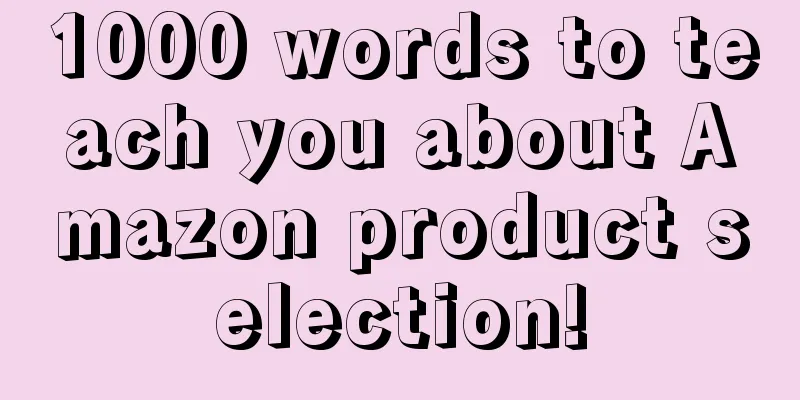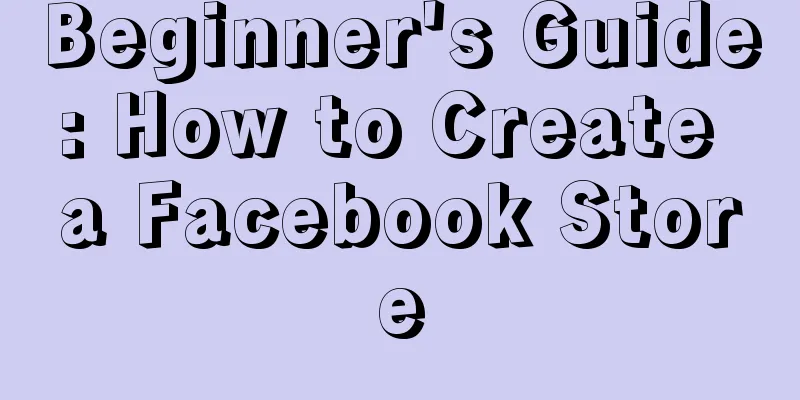1000 words to teach you about Amazon product selection!

|
For most Amazon sellers, product selection has always been a difficult problem. If product selection is done well, the store operation will have a foundation, and combined with marketing and traffic diversion, it will be much smoother. Every operator has his own opinion on product selection, which is also the first step in our product operation. Product selection comes from life and market demand. 1. Market situation analysis 1. Let’s take “plywood” as an example. Through the Google Trends query in SellerSprite, we can see that the search volume for this category is not very high, but it is also in the upper middle range. The search volume fluctuates little within a year, which shows that it is not a seasonal product. 2. Collect data from the top 100 products in this category, and then export the data for analysis. Through the data of these 100 products, I made the following summary: Price: The average market price is US$28, which shows that the price is just right, with room for operation, but not too high. Sales: The first place had daily sales of $940, and the market demand is huge. Category: It belongs to a small category, the ranking will improve quickly and it has a market. At the same time, competitors’ self-delivery rankings and sales are also good, and the market competition is low. Brand: The brand share is low and the market is not saturated. 2. Product Positioning When faced with products of different sizes and thicknesses, it is extremely important to make a market analysis on how to choose. In the plywood category, birch plywood accounts for the largest proportion, while MDF accounts for a small proportion; thicknesses of 3 and 6 mm account for the majority, and 3 mm also has more negative reviews, while MDF has very few negative reviews. Therefore, 6 mm birch plywood can be used for early testing. 3. Determine whether the category is feasible There are a lot of articles and courses about product selection every day, and the majority of sellers are also studying and researching tirelessly, and basically everyone can talk about it. For example, the product price should not be too low, the quality should be small, the volume should not be too large, the packaging should not be afraid of rough transportation, it does not require laborious installation, and the profit margin is high, etc. You may have discovered that the products that meet these conditions are either saturated markets with fierce competition, or small and unpopular product categories with only a few orders a day. Here I classify the content of product selection into the following four parts. 1. Profit first As a seller, I think as long as the profit margin is high enough, the audience is large, and it can be transported, regardless of the volume, rigid demand, or seasonality, all should be put aside. Note: The profit margin of the product not only needs to calculate the cost of picking up, shipping, and returning goods, but also needs to check the advertising bidding, off-site promotion and other costs. 2. Audience Recognition Your product must be within the scope of customers' cognition and be accepted by them. Many fancy products may be popular for a while, but they will soon disappear in the vast sea of commodities like fireworks. Products recognized by the audience may explode slowly, but they are stable, lasting and sustainable. 3. Differentiated product selection Products must have their own unique advantages. Seeking differentiation of advantages requires careful analysis of customer needs. The simplest way is to upgrade and optimize existing products on the market, which can not only enhance the market competitiveness of products, but also avoid some patent infringement pitfalls. Of course, you can also make a fuss about service and brand image, but try not to use price wars that harm others and yourself. 4. Product selection misunderstandings Attention all sellers friends!! 1. Serious product homogeneity 2. Ignoring user pain points 3. Follow the trend, such as the previous fidget spinners and other types of products 4. The method of analyzing reviews is wrong. Both positive and negative reviews need to be analyzed. Finally, I have compiled a list of product selection tips for everyone. Today's benefits |
<<: How to save yourself after Amazon images are tampered with by cross-site copycats
>>: Amazon keeps reporting errors when modifying titles, here is a solution!
Recommend
Amazon operators with a monthly salary of 20,000 yuan, what do they do every day
Today I will share with you what Amazon operators ...
Amazon account sellers arrested?! Be careful when buying from stores!
In the past two days, sellers have been discussin...
What is SendBlaster? SendBlaster Review
SendBlaster is a very powerful and easy-to-use mul...
Beware! These products are being boycotted, and Target has removed them from shelves!
It is learned that according to foreign media repo...
Amazon puts robot distribution center into operation in Canada in preparation for peak shopping season
<span data-shimo-docs="[[20,"获悉,据外媒报道,近日亚马...
The US consumer confidence index has dropped to the lowest level in nearly three months! The home appliance market has suddenly cooled down!
<span data-shimo-docs="[[20,"获悉,根据美国会议委员会发...
How to stabilize order volume and ranking after Amazon promotion
On Amazon, flash sales are a powerful tool to boos...
Walmart announced that it will cancel installment payments before the peak season! Adopt the "buy now, pay later" model
It is learned that Walmart recently announced that...
What is Lebao Logistics? Lebao Logistics Review
Shenzhen Rushbox Co., Ltd. (RUSHBOX) specializes i...
Attention! Amazon warehouse is about to stop receiving goods!
text Recently, with the arrival of the peak seaso...
What is UK VAT Zero Declaration? UK VAT Zero Declaration Review
If there is no taxable income (sales) during the t...
Amazon updates pricing features to start a price war
Remember that at the beginning of last month, we ...
What is SASO certification? SASO certification evaluation
SASO is the abbreviation of Saudi Arabian Standard...
Your Li Siting real review score is very low, don’t deny the product quality is low: Amazon sellers’ product quality management
"Wen Dao Seminar: Activity Overview" Aug...
Costco enters the fast fashion industry with TikTok's popularity exceeding 1.8 billion!
It is learned that users on TikTok and other socia...









